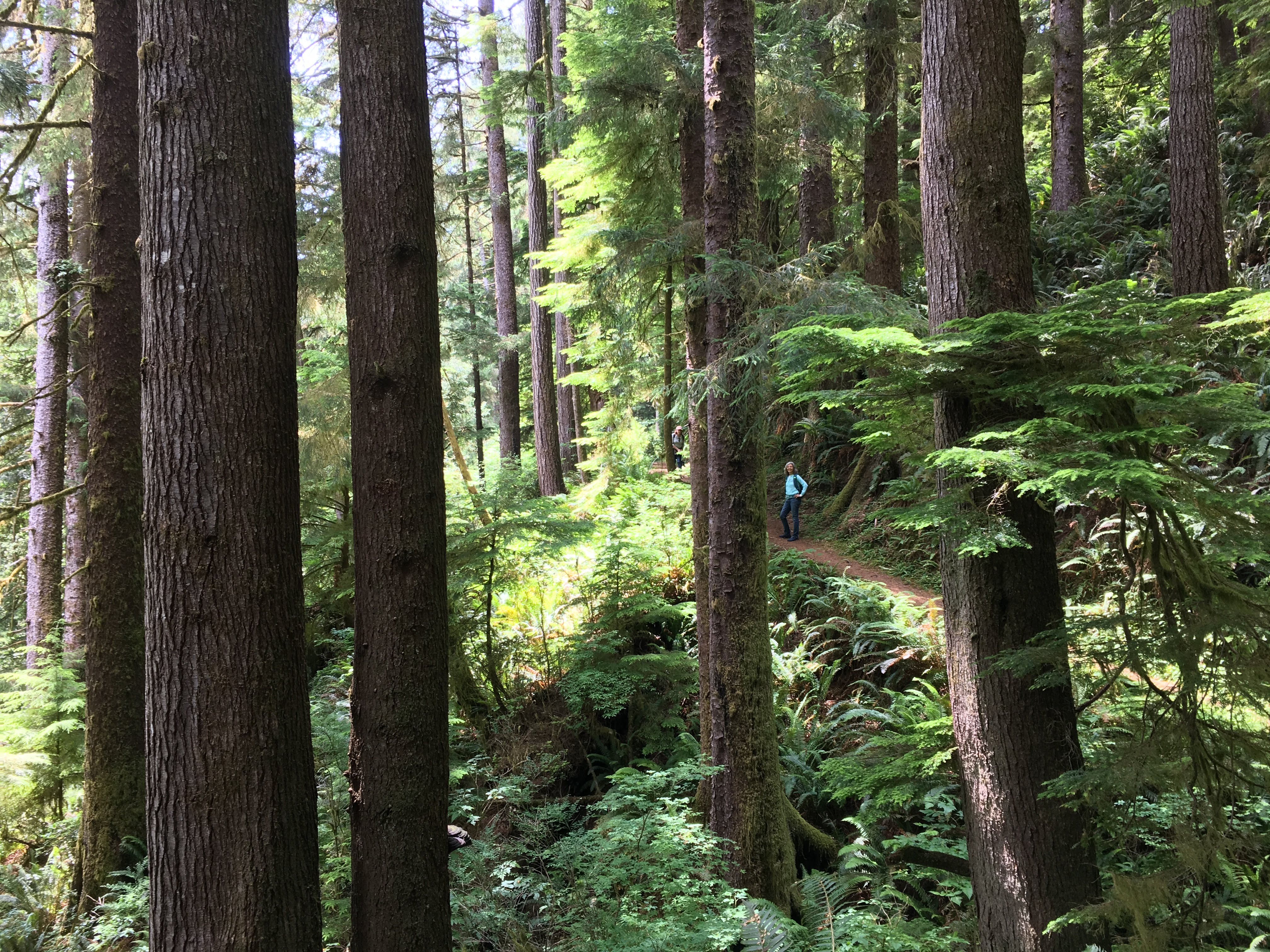
Cape Perpetua Gwynn Creek Loop - The Hike:
Distance: 6.4 mile loop
Difficulty: Difficult
Elevation Gain: 1,100 feet
First, Some Background:
This hike is located in Oregon’s Central Coast Range, in the Cape Perpetua Scenic Area, just north of the Cummins Creek Wilderness. The Central Coast Range spans along the coast from Newport to Coos Bay and receives over 100 inches of rain fall each year. This rain, combined with mild temperatures, makes for a great tree growing environment. The rain also feeds major rivers like the Yaquina, Alsea, Siuslaw, and Umpqua, along with their extensive tributary networks and countless streams that flow into the Ocean. These rivers support chinook and coho salmon, steelhead, and plenty of recreation as well. The Cape Perpetua Scenic area offers great hiking trails, camping spots, viewpoints, tidepools, and giant trees. We encourage you to check out the visitor center, which offers information about the area’s history and also is a great place to look for whales.
How to Get There:
From Florence, Oregon, head north on US Highway 101 for 23 miles to signs for the Cape Perpetua Visitor Center (between mileposts 168 and 169). From Yachats, Oregon, head 3 miles south on US 101. Park in the large lot.
Hike Description:
Begin at the Cape Perpetua Visitor Center, located at the uphill part of the parking area. The trail starts on an old roadbed and climbs up. You will pass some impressive Sitka spruce with a tall shrub understory. After crossing a little creek on a bridge, you will enter an old plantation stand with some big spruce trees and tall swordferns. Head up the ridge with Cape Creek on your left and you’ll come to the Discovery Loop. Continue straight to reach the main trail more quickly, and steadily wind up through the plantation. You’ll notice that the dense canopy prevents much from growing on the ground. Soon after the half-mile point there is an interpretive sign located near some large snags and legacy trees from the original forest stand. At 0.7 miles you will reach the top of the loop. Go left to continue up the ridge. The trees become more stately and the climb becomes more gradual. The trail continues along Cooks Ridge with Cape Creek to the north and Gwynn Creek to the south. Follow along up and down ridgetop saddles, gently climbing as you head east through a forest of tall spruce, western hemlock, and Douglas-fir with huckleberry, salal, and swordfern. Be sure to take some time to enjoy the views of the dense forests and of the ocean behind you.
You will reach the high point of the hike at about 2.3 miles. Descend a bit from here toward a south-facing slope with a lovely multileveled canopy. And at mile 2.4 you will intersect with the Gwynn Creek Trail. Turn right at the intersection and continue downhill, passing Douglas-fir, hemlock, and a few small spruce and redcedars. At about 2.8 miles, the trail begins to switch-backdown the ridge to Gwynn Creek below. The trail continues to descend more gradually between 3 and 3.5 miles. Enjoy spectacular views through the forest of old-growth Douglas-fir trees with massive arms and furrowed, fire-scarred bark.
The trail finally gets close to creek-level at about 3.5 miles and flattens into a gradual descent. Over the next nearly 2 miles, you will dip in and out of small side-ravines and cross many side streams. More and bigger spruce trees reenter the forest as you continue to head west toward the ocean. At 5.4 miles into the loop, the Gwynn Creek Trail meets the Oregon Coast Trail. Turn right here to go back toward the visitor center, taking you through a forest now dominated by Sitka spruce. Enjoy the sights and sounds of the ocean, almost drowning out the noise of US 101 just below. Cross the Cape Perpetua entrance road and turn right on Captain Cook Trail to head back to the visitor center and parking area. (Alternatively, if you want to take a side trip to the tidepools you can turn left at this intersection.)
-----------------------------------------
Be sure to check out our new book, Oregon’s Ancient Forests: A Hiking Guide, to discover 91 awe-inspiring hikes like this one and learn more about ancient forests. Get your copy online, in select bookstores, or at one of our book events throughout the summer.
Follow along for book updates and events on Facebook at Oregon’s Ancient Forests, and Instagram @oregon_ancient_forests. And in return, we’d love to follow along on your ancient forest adventures! Tag your forest photos with #OregonOldGrowth and #ORAncientForests.
For more hikes and outdoor adventures, check out our suggested outings page.

